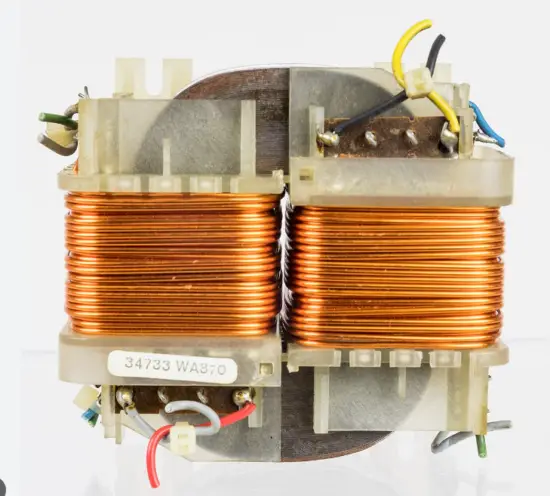Explore the vital role of transformers in electrical engineering, their construction, working principles, types, applications, and the latest innovations.
Understanding Transformers in Electrical Engineering
 Transformers are integral components in the field of electrical engineering, serving as devices that transfer electrical energy between two or more circuits through electromagnetic induction. The fundamental purpose of a transformer is to increase (‘step up’) or decrease (‘step down’) voltage levels efficiently over long distances, which is crucial for the transmission and distribution of electricity.
Transformers are integral components in the field of electrical engineering, serving as devices that transfer electrical energy between two or more circuits through electromagnetic induction. The fundamental purpose of a transformer is to increase (‘step up’) or decrease (‘step down’) voltage levels efficiently over long distances, which is crucial for the transmission and distribution of electricity.
Construction and Principles
The basic construction of a transformer consists of a core, typically made of laminated iron to facilitate magnetic flux, and two or more coils of wire, known as windings. These windings are classified as primary and secondary based on their connection to the power source and load, respectively. The primary winding receives the input voltage, which creates a varying magnetic flux in the core, inducing a voltage in the secondary winding.
Working Principle
The working principle of a transformer is based on Faraday’s law of electromagnetic induction, which states that a change in magnetic flux can induce an electromotive force (EMF) in a coil. The ratio of the number of turns in the primary coil (N1) to the number of turns in the secondary coil (N2) is known as the turns ratio, and it determines the transformer’s voltage ratio. The induced EMF (E2) in the secondary winding can be calculated using the equation E2 = (N2 / N1) * E1, where E1 is the EMF in the primary winding.
Types of Transformers
- Step-up Transformer: Increases voltage from primary to secondary winding.
- Step-down Transformer: Decreases voltage from primary to secondary winding.
- Isolation Transformer: Provides electrical isolation without changing voltage.
- Autotransformer: A single, continuous winding acts as both primary and secondary, allowing for a variable voltage ratio.
Applications
Transformers are ubiquitous in electrical networks, from power plants to household electronic devices. They are essential for:
- Electrical power distribution across cities and regions.
- Adapting voltage levels for domestic and industrial appliances.
- Ensuring safe operation of devices through isolation transformers.
Transformers also play a pivotal role in the functionality of renewable energy systems, such as wind turbines and solar panels, by adjusting the generated voltage for storage or grid compatibility.
The efficiency of transformers is generally high, often exceeding 90%, making them a reliable and economical choice for energy transfer. However, they are not free from energy losses, primarily due to joule heating in the conductors, core losses induced by alternating magnetic fields, and leakage flux.
In summary, transformers are a cornerstone of modern electrical engineering, facilitating the safe and efficient transmission and utilization of electrical power. Their design and operation principles are a direct application of fundamental electromagnetic concepts, proving the practical significance of theoretical science.
Efficiency and Losses in Transformers
Transformers are generally highly efficient, with large power transformers achieving efficiencies greater than 99%. However, some energy is inevitably lost in the process. These losses are categorized into two main types:
- Core Losses: Also known as iron losses, these occur due to the alternating magnetic field in the core and are comprised of hysteresis and eddy current losses. Hysteresis losses are due to the resistance of the core material to changes in magnetization, while eddy current losses are caused by circulating currents induced in the iron core by the alternating flux.
- Copper Losses: Also known as I2R losses, these occur due to the resistance of the winding material when current flows through it, leading to heat generation. Copper losses are variable and increase with the load due to the squared relationship with the current.
Maintenance and Reliability
Proper maintenance is essential for the longevity and reliability of transformers. Periodic inspections and tests such as oil analysis, thermographic inspections, and electrical tests can prevent failures and extend the operational life of these devices.
Innovation in Transformer Technology
Recent advancements in transformer technology focus on improving efficiency, reducing size, and accommodating alternative energy sources. Innovations include amorphous metal cores, which have lower hysteresis losses, and smart transformers that can communicate with the electrical grid to optimize performance and integrate renewable energy sources more effectively.
Environmental Impact and Future Trends
Environmental considerations are becoming increasingly important in the design and operation of transformers. Efforts are being made to reduce the use of materials with high environmental impact and to design transformers that are more energy-efficient, thereby reducing carbon emissions associated with electricity transmission and distribution.
The future of transformers is also closely tied to the development of smart grids and the increased use of renewable energy sources. Smart transformers will be essential in managing the variable load and supply conditions associated with renewables, thus playing a crucial role in the transition towards sustainable energy systems.
Conclusion
Transformers are foundational to our modern electrical infrastructure, enabling the practical use of electricity over vast distances and in countless applications. Their design and operational principles are a testament to the power of electromagnetic theory in action. While already efficient, ongoing research and development continue to enhance transformer technology, aiming for even greater efficiency, reduced environmental impact, and seamless integration with emerging smart grid and renewable energy technologies. As we advance towards a more electrified and sustainable future, the role of transformers remains central, evolving with the times to meet the dynamic demands of global energy consumption.

